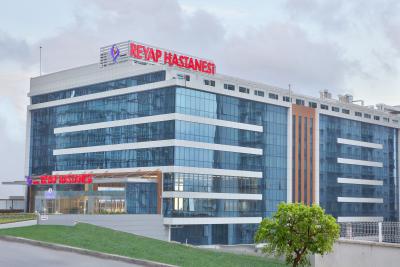

Neurology is a department that specializes in the anatomy, functions, and organic disorders of the brain and nervous system that determine every aspect of how we interact with the world. Neurologists are doctors who study, diagnose, and treat brain and nervous system disorders.
Neurologists use modern breakthrough treatments to treat diseases of the nervous system. Innovations in neurological technology and treatments are advancing at an incredible rate, and the ability to treat neurological disorders has grown rapidly in the last decades and will continue to grow exponentially in the coming years.
What diseases do neurosurgery specialists treat?
Neurosurgery plays a role in the treatment of many diseases, and all of these diseases are highly sensitive and critical due to their location. Diseases treated in the neurosurgery department;
Tumors that originate from inside the brain or spinal cord tissue or seconder tumors that affect the brain,
Stenosis in the neck vessels called carotid stenosis due to disorders such as aneurysm (ballooning), arteriovenous malformation, cavernoma of the vessels feeding the brain tissue or the spinal cord,
Disorders that develop during the formation of the nervous system such as meningomyelocele associated with birth,
An increase in the amount of fluid in the brain cavities called hydrocephalus,
All kinds of spinal diseases, especially herniated disc,
Head and spinal cord injuries,
Clogging of brain vessels,
Brain bleeding,
Tumors of the pituitary gland and surrounding tissues,
Diseases involving all kinds of peripheral nerves, especially nerve compression at the wrist and elbow level (carpal tunnel syndrome, ulnar groove syndrome).
Brain tumors
Brain tumors develop when cells in one area of the brain grow uncontrollably. These tumors are classified as primary or secondary. Tumors that develop from the tissues within the brain are called primary, and tumors originating from another organ and spreading to the brain are called secondary (metastatic) brain tumors. In another aspect, brain tumors are divided into two classes as benign and malign tumors.
Clinical findings
The initial symptoms of brain tumors and the severity of these symptoms vary according to the location of the tumor. Since early diagnosis is crucial if you have one of these symptoms, you should see a neurology specialist;
Headache,
Dizziness,
Vomiting,
Fainting attacks
Weakness, numbness in hands and feet (paralysis symptoms),
Speech disorder
Psychological disorders,
Impairment in some skills (such as calculating and writing)
Diagnosing brain tumors
The symptoms above can be recognized whenever intracranial pressure increases. When these complaints emerge, a health care provider should be seen. Detailed neurological evaluation and evaluation with CT or MRI should be performed when necessary.
Microsurgery in waist and neck hernia
Surgical treatment is preferred for patients who cannot achieve satisfactory recovery with non-surgical methods. The purpose of surgery in the herniated disc is to eliminate the compression of the tissue on the spinal cord and nerve roots, to relieve the nerve, and thus to reduce the symptoms of pain and weakness. The same logic applies in the treatment of cervical disc hernia.
The microscopic discectomy method is the most preferred in modern neurosurgery practice. With this method, the skin incision is kept short (minimally invasive) and the hernia tissue is cleaned with a microscope and the nerve is relieved without causing much damage.
Patients undergoing microdiscectomy are usually allowed to walk the day after the operation and are discharged on the same day.
In the following days, leg pain will decrease by 80-90%.
3D technology in lumbar spinal stenosis and spondylolisthesis
If one of the vertebrae moves forward for any reason and the line is disturbed, the carrying capacity of the spine decreases and it causes strain on the waist. The lumbar shift causes pain, numbness, weakness, and urinary incontinence in the waist and legs.
The lumbar shift (slip) may be a congenital anatomical disorder. The acquired lumbar shift may also be the result of excessive strain, bad conditions, or an accident.
Waist slipping also causes strain on the ligaments and joints that keep our waist straight. With this strain, facet joints and ligaments become unevenly thick and narrow the nerve canals, increasing the compression of the spinal cord and nerve roots. In some cases, some bone fragments at the back of the vertebra break off over time, and the degree of slippage increases.
The rate of water in the cartilage disc tissue between the bones decreases because of aging, excessive weight-bearing, and unbalanced movements. Disc tissue bulges towards the spinal canal and hardens.
For similar reasons, the facet joints between the spinal bones thicken, and the normally soft yellow fibers called the ligamentum flavum, located at the back of the canal, thicken and harden. All of these reasons cause a nerve disease called the spinal narrow canal, which is a compressive and disturbing condition.
Treatment of waist shift is through fixing the bones of the waist to each other with titanium screws. With the development of transpedicular titanium screwing systems, waist displacement surgeries can be performed safely today.
Surgical treatment options are recommended for patients whose complaints continue despite non-surgical treatment methods in lumbar canal stenosis.
What is done here is to expand the narrowed bone canal and to relax the nerve tissue that passes through it.
Sometimes stabilization and fusion procedures with titanium screws can be combined with the relief process called decompression, lumbar laminectomy surgery.
The treatment method to be applied to which patient is decided by considering the patient’s current complaints, physical examination, and imaging findings, as well as the patient’s expectations and general medical status after the evaluation of the neurosurgeon.
Screw applications are common procedures in spine surgery.





















